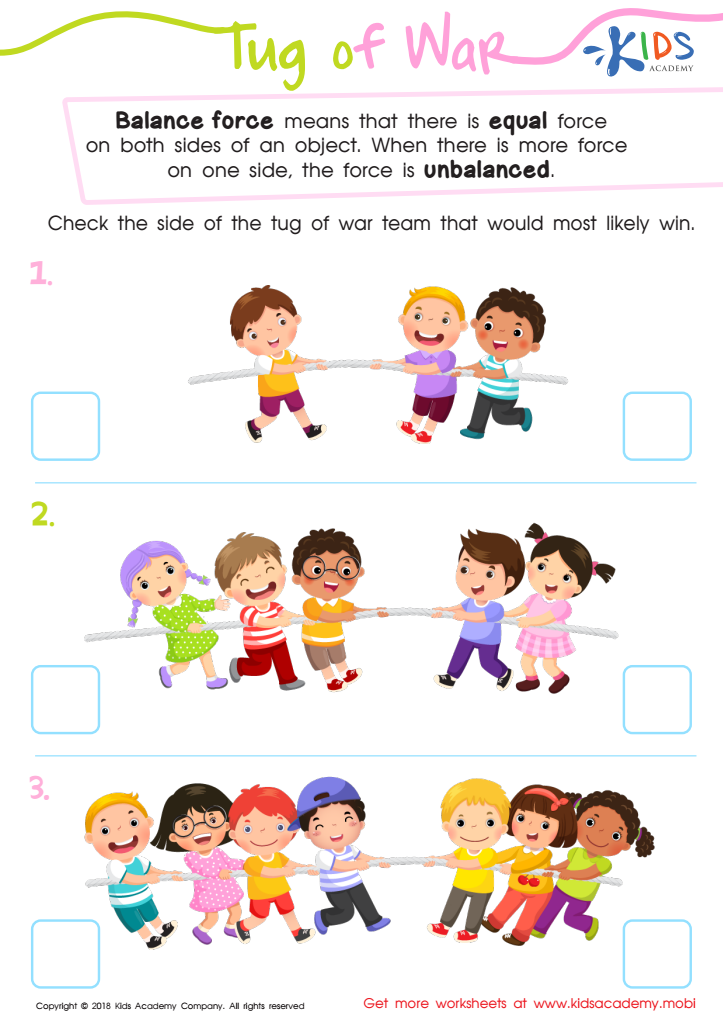Interpreting diagrams Worksheets for Kids
1 filtered results
-
From - To


Balanced Forces Worksheet
Question/Answer
How does the mastery of the Interpreting diagrams skill affect a student's performance at an early age?
Mastery of the interpreting diagrams skill at an early age significantly enhances a student's ability to understand and process visual information, leading to improved comprehension across subjects. It fosters critical thinking, problem-solving skills, and the ability to communicate complex ideas more effectively.
Why is the Interpreting diagrams skill important for Grade 3 students?
The Interpreting diagrams skill is crucial for Grade 3 students as it enhances their ability to understand and analyze visual information, supports their problem-solving and critical thinking skills, and helps in the effective communication of complex data. This foundational skill is also essential for success in math, science, and reading comprehension, laying a groundwork for advanced learning.
How to train the Interpreting diagrams skill in Grade 3 students learning about Physical Science?
To train Grade 3 students in interpreting diagrams for Physical Science, start with simple, clear diagrams related to their syllabus. Use interactive activities such as matching diagrams with descriptions, labeling parts of a diagram, and creating their own basic diagrams from descriptions.
 Assign to the classroom
Assign to the classroom



%20(1).jpg)

.jpg)






